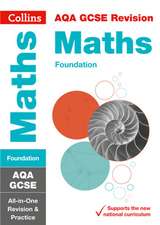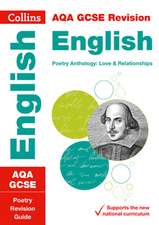Why Math?: Undergraduate Texts in Mathematics
Autor R.D. Driveren Limba Engleză Paperback – 19 dec 1994
Din seria Undergraduate Texts in Mathematics
- 17%
 Preț: 362.13 lei
Preț: 362.13 lei - 17%
 Preț: 365.42 lei
Preț: 365.42 lei -
 Preț: 290.80 lei
Preț: 290.80 lei -
 Preț: 370.77 lei
Preț: 370.77 lei -
 Preț: 298.00 lei
Preț: 298.00 lei - 17%
 Preț: 368.60 lei
Preț: 368.60 lei -
 Preț: 433.85 lei
Preț: 433.85 lei -
 Preț: 304.91 lei
Preț: 304.91 lei - 17%
 Preț: 395.93 lei
Preț: 395.93 lei -
 Preț: 380.26 lei
Preț: 380.26 lei -
 Preț: 407.96 lei
Preț: 407.96 lei -
 Preț: 372.26 lei
Preț: 372.26 lei - 17%
 Preț: 373.59 lei
Preț: 373.59 lei - 17%
 Preț: 367.24 lei
Preț: 367.24 lei -
 Preț: 358.10 lei
Preț: 358.10 lei -
 Preț: 257.71 lei
Preț: 257.71 lei -
 Preț: 339.36 lei
Preț: 339.36 lei - 15%
 Preț: 417.73 lei
Preț: 417.73 lei - 17%
 Preț: 362.67 lei
Preț: 362.67 lei - 19%
 Preț: 368.78 lei
Preț: 368.78 lei -
 Preț: 400.42 lei
Preț: 400.42 lei - 19%
 Preț: 400.52 lei
Preț: 400.52 lei -
 Preț: 359.48 lei
Preț: 359.48 lei -
 Preț: 415.94 lei
Preț: 415.94 lei -
 Preț: 280.65 lei
Preț: 280.65 lei -
 Preț: 407.62 lei
Preț: 407.62 lei -
 Preț: 364.40 lei
Preț: 364.40 lei - 20%
 Preț: 466.83 lei
Preț: 466.83 lei -
 Preț: 402.33 lei
Preț: 402.33 lei -
 Preț: 400.42 lei
Preț: 400.42 lei -
 Preț: 440.01 lei
Preț: 440.01 lei - 13%
 Preț: 389.61 lei
Preț: 389.61 lei -
 Preț: 424.14 lei
Preț: 424.14 lei - 17%
 Preț: 366.38 lei
Preț: 366.38 lei -
 Preț: 395.09 lei
Preț: 395.09 lei -
 Preț: 332.02 lei
Preț: 332.02 lei -
 Preț: 329.94 lei
Preț: 329.94 lei - 19%
 Preț: 492.82 lei
Preț: 492.82 lei -
 Preț: 396.24 lei
Preț: 396.24 lei -
 Preț: 390.08 lei
Preț: 390.08 lei - 15%
 Preț: 521.04 lei
Preț: 521.04 lei -
 Preț: 402.00 lei
Preț: 402.00 lei - 15%
 Preț: 531.72 lei
Preț: 531.72 lei - 15%
 Preț: 447.81 lei
Preț: 447.81 lei - 15%
 Preț: 533.53 lei
Preț: 533.53 lei -
 Preț: 390.08 lei
Preț: 390.08 lei
Preț: 385.84 lei
Nou
Puncte Express: 579
Preț estimativ în valută:
73.83€ • 77.08$ • 61.10£
73.83€ • 77.08$ • 61.10£
Carte tipărită la comandă
Livrare economică 04-18 aprilie
Preluare comenzi: 021 569.72.76
Specificații
ISBN-13: 9780387944272
ISBN-10: 0387944273
Pagini: 233
Ilustrații: XIV, 233 p.
Dimensiuni: 155 x 235 x 18 mm
Greutate: 0.36 kg
Ediția:1st ed. 1984. 2nd printing 1994
Editura: Springer
Colecția Springer
Seria Undergraduate Texts in Mathematics
Locul publicării:New York, NY, United States
ISBN-10: 0387944273
Pagini: 233
Ilustrații: XIV, 233 p.
Dimensiuni: 155 x 235 x 18 mm
Greutate: 0.36 kg
Ediția:1st ed. 1984. 2nd printing 1994
Editura: Springer
Colecția Springer
Seria Undergraduate Texts in Mathematics
Locul publicării:New York, NY, United States
Public țintă
Lower undergraduateCuprins
1 Arithmetic Review.- 1.1 Basis Rules.- 1.2 Division, Fractions, and Exponents.- 1.3 Percentages.- 1.4 Rates.- 2 Prime Numbers and Fractions.- 2.1 Prime Numbers and Factorization.- 2.2 Greatest Common Factor.- 2.3 Rationals and Irrationals.- 3 The Pythagorean Theorem and Square Roots.- 3.1 The Theorem.- 3.2 Square Roots Which Are Irrational.- 3.3 Computation of Square Roots by Successive Approximation.- 4 Elementary Equations.- 4.1 Equations in One Unknown.- 4.2 The Use of Two or More Unknowns.- 4.3 Graphing.- 5 Quadratic Polynomials and Equations.- 5.1 Solution of Quadratic Equations.- 5.2 Applications of Quadratic Equations.- 5.3 Quadratic Polynomials.- 6 Powers and Geometric Sequences.- 6.1 Applications of Powers.- 6.2 More on Half-Lives.- 6.3 Compound Interest and Related Matters.- 6.4 IRAs and Similar Tax Sheltered Accounts.- 6.5 Geometric Series—the “Sum” of a Geometric Sequence.- 7 Areas and Volumes.- 7.1 Areas.- 7.2 Volumes.- 7.3 Surface Area of a Solid (versus Volume).- 7.4 Computation of Cube Roots.- 8 Galilean Relativity.- 8.1 Displacement and Velocity Vectors.- 8.2 Doppler Effect.- 8.3 Components of Vectors.- 9 Special Relativity.- 9.1 Simultaneity and Einstein’s Postulate.- 9.2 Time Dilation.- 9.3 Length Contraction.- 10 Binary Arithmetic.- 10.1 Decimal, Binary, and Ternary Representation of Integers.- 10.2 Subtraction and Division in Base Two.- 10.3 Applications.- 11 Sets and Counting.- 11.1 Set Notation.- 11.2 Counting.- 12 Probability.- 12.1 Elementary Ideas and Examples.- 12.2 Mutually Exclusive Events.- 12.3 The Basic Rules.- 12.4 Quality Control (optional).- 12.5 Expectation.- 12.6 Conditional Probability.- 13 Cardinality.- 13.1 Countable Sets.- 13.2 Countably Many Countable Sets.- 13.3 The Reals vs. the Rationals.- Answers to Odd-NumberedProblems.


















